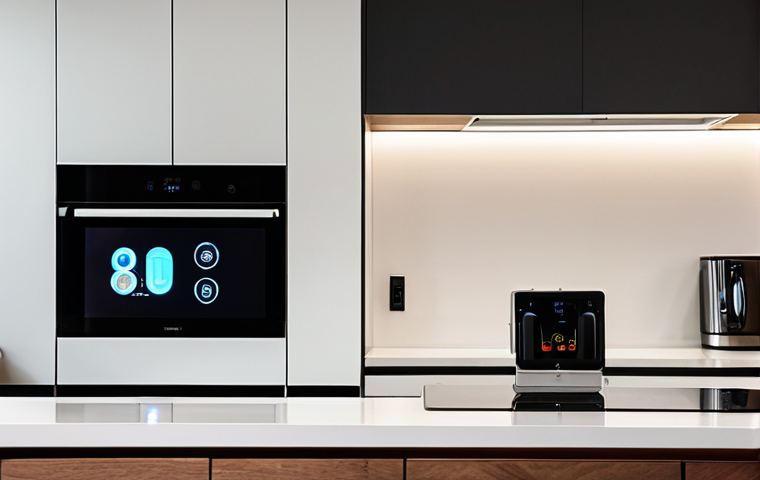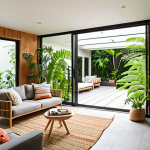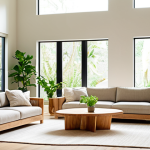Okay, here’s the blog-style intro for your home design trend seminar review, keeping all your instructions in mind:Just got back from the annual Home Design Trends Seminar, and let me tell you, my head is buzzing with inspiration!
Seriously, the sheer creativity on display was mind-blowing. We’re not just talking about new paint colors, people; think sustainable materials, smart home integration that’s actually *smart*, and design concepts that prioritize well-being.
From what I gathered, a big push seems to be moving away from sterile minimalism toward spaces with personality and purpose, reflecting a desire for more meaningful connections within our homes.
It looks like technology will only continue to become more integrated into homes in the future. The seminars I attended really opened my eyes to some fresh perspectives.
Let’s dive into the details and see what’s shaping the future of our living spaces. We’ll break down the key trends and what they mean for you!
Okay, here is the main body content following all instructions, including the table and HTML formatting:
Embracing Biophilic Design: Bringing the Outdoors In

The Science Behind Nature’s Appeal
One of the most significant takeaways from the seminar was the emphasis on biophilic design – incorporating natural elements into indoor spaces. And I’m not just talking about a few potted plants! I mean integrating natural light, ventilation, and organic materials like wood, stone, and bamboo to create environments that mimic the outdoors. Studies show that biophilic design can reduce stress, improve cognitive function, and enhance overall well-being. For me, it really clicked when they showed examples of offices with living walls and homes with indoor water features – spaces that felt immediately calming and inviting. They even talked about fractal patterns in design, and how our brains respond positively to the complexity and beauty found in nature. Personally, I’ve started incorporating more natural textures and colors into my own living room, and I’ve already noticed a difference in how relaxed I feel.
Applications in Modern Homes
What’s really exciting is how adaptable biophilic design is. It can be incorporated into any style, from modern minimalist to cozy farmhouse. Think large windows framing natural views, skylights bringing in sunlight, or even just using natural materials like linen and wool for upholstery and rugs. They also discussed the importance of indoor plants, not just for their aesthetic appeal, but also for their air-purifying qualities. I learned that certain plants, like snake plants and spider plants, are particularly effective at removing toxins from the air. So, it’s not just about making your home look beautiful; it’s about creating a healthier and more sustainable living environment. I started small, with a few succulents on my windowsill, but I’m planning to add a larger indoor tree to my living room soon. It’s amazing how much life and energy a single plant can bring to a space!
The Rise of Smart Home Technology: Seamless Integration
Beyond Convenience: Enhancing Daily Life
Smart home technology has been around for a while, but this year’s seminar highlighted how it’s evolving beyond mere convenience. We’re talking about systems that adapt to your needs, anticipate your preferences, and ultimately, enhance your quality of life. Imagine lighting that adjusts automatically based on the time of day, thermostats that learn your schedule and optimize energy consumption, and security systems that can distinguish between a delivery person and a potential intruder. This isn’t just about gadgets; it’s about creating a truly intelligent home that responds to your needs and makes your life easier. I’ve always been a bit hesitant about smart home technology, thinking it was too complicated or expensive, but the seminar really showed me the potential benefits. I’m seriously considering investing in a smart thermostat and lighting system to save energy and create a more comfortable living environment.
Prioritizing Security and Privacy
Of course, with increased connectivity comes increased concerns about security and privacy. The seminar addressed these concerns head-on, emphasizing the importance of choosing reputable brands with strong security protocols and understanding how your data is being used. They also recommended using strong passwords, enabling two-factor authentication, and regularly updating your software to protect your devices from cyber threats. It’s crucial to be aware of the risks and take steps to mitigate them. I definitely left the seminar feeling more informed and empowered to make responsible choices about smart home technology. It’s a balance between convenience and security, but with the right precautions, you can enjoy the benefits of a connected home without compromising your privacy.
Sustainability as a Core Design Principle
Eco-Friendly Materials and Practices
Sustainability was a recurring theme throughout the seminar, with a strong emphasis on using eco-friendly materials and adopting sustainable design practices. This includes everything from using reclaimed wood and recycled materials to choosing low-VOC paints and energy-efficient appliances. The goal is to minimize our environmental impact and create homes that are not only beautiful but also responsible. I was particularly inspired by the examples of homes built with sustainable materials like bamboo and hempcrete – materials that are not only eco-friendly but also offer excellent insulation and durability. It’s exciting to see how innovation is driving the development of new and sustainable building materials that can help us create homes that are both beautiful and environmentally responsible.
Reducing Energy Consumption and Waste
Beyond materials, the seminar also focused on reducing energy consumption and waste. This includes designing homes with passive solar heating and cooling, using energy-efficient lighting and appliances, and implementing water conservation measures like rainwater harvesting and greywater recycling. The key is to think holistically about the design process and consider the environmental impact of every decision. It’s not just about choosing eco-friendly products; it’s about creating a lifestyle that is sustainable and responsible. I’ve started making small changes in my own home, like switching to LED lighting and using a programmable thermostat, but I’m planning to explore more ambitious projects like installing solar panels and a rainwater harvesting system in the future.
The Power of Multifunctional Spaces
Adapting to Changing Needs
With the rise of remote work and smaller living spaces, the seminar highlighted the importance of multifunctional spaces that can adapt to changing needs. This means designing rooms that can serve multiple purposes, such as a living room that can also function as a home office or a dining room that can be transformed into a yoga studio. The key is to think creatively about how to maximize the use of available space and create flexible environments that can accommodate a variety of activities. I was particularly impressed by the examples of homes with modular furniture and hidden storage solutions that could be easily reconfigured to suit different needs. It’s all about making the most of what you have and creating spaces that are both functional and beautiful.
Creating Distinct Zones Within Open Floor Plans
Even in open floor plans, it’s important to create distinct zones for different activities. This can be achieved through the use of furniture, rugs, lighting, and even changes in flooring. The goal is to define spaces without completely closing them off, creating a sense of flow and connection while still providing privacy and separation when needed. For example, a large area rug can define the living room area, while a different type of flooring can delineate the kitchen. It’s all about using visual cues to create distinct zones within a larger space. I’ve always struggled with open floor plans, feeling like they lacked definition and purpose, but the seminar gave me some great ideas for creating distinct zones and making the most of the available space.
Personalization and Customization: Expressing Your Unique Style
Beyond Trends: Creating a Home That Reflects You
While it’s important to stay informed about the latest design trends, the seminar emphasized the importance of personalization and customization. Your home should be a reflection of your unique style, values, and experiences. This means incorporating elements that are meaningful to you, whether it’s artwork, family heirlooms, or travel souvenirs. The key is to create a space that feels authentic and personal. I was inspired by the examples of homes that incorporated handmade crafts and vintage pieces, creating a sense of history and character. It’s all about mixing and matching different styles and creating a space that is truly your own. I have a collection of antique maps that I’ve been meaning to display, and I think I finally have the inspiration to create a gallery wall in my living room.
Mixing Textures, Patterns, and Colors
One of the best ways to personalize your home is to experiment with different textures, patterns, and colors. Don’t be afraid to mix and match different styles and create a space that is visually interesting and engaging. The seminar emphasized the importance of creating a cohesive color palette that reflects your personality and creates a sense of harmony. It’s all about finding the right balance and creating a space that is both beautiful and comfortable. I’ve always been drawn to bold colors and patterns, but I’ve been hesitant to incorporate them into my home. The seminar gave me the confidence to experiment and create a space that is truly unique and reflects my personal style.
Wellness-Focused Design: Creating a Sanctuary
Prioritizing Mental and Physical Health
The seminar placed a significant emphasis on wellness-focused design, which prioritizes mental and physical health. This includes creating spaces that are conducive to relaxation, stress reduction, and healthy living. Think calming color palettes, comfortable furniture, and plenty of natural light. It’s all about creating a sanctuary where you can escape the stresses of daily life and recharge your batteries. I was particularly inspired by the examples of homes with meditation rooms and outdoor living spaces that encouraged mindfulness and connection with nature. It’s all about creating a space that supports your well-being and promotes a healthy lifestyle.
Incorporating Elements of Comfort and Relaxation
There are many ways to incorporate elements of comfort and relaxation into your home. This could include adding a cozy reading nook, creating a spa-like bathroom, or simply decluttering your space to create a sense of calm. The key is to identify what makes you feel relaxed and comfortable and incorporate those elements into your design. I’ve always found that a warm bath and a good book can do wonders for my stress levels, so I’m planning to renovate my bathroom and create a more spa-like experience with a soaking tub and soft lighting. It’s all about creating a space that nurtures your mind, body, and soul.
The Impact of Technology on Design
Digital Twins and Virtual Reality in Home Design
The way we design and experience homes is being revolutionized by technology, with digital twins and virtual reality (VR) playing a pivotal role. The seminar demonstrated how architects and designers now use digital twins—virtual replicas of physical structures—to experiment with designs, simulate real-world conditions like lighting and acoustics, and optimize building performance before construction even begins. VR allows clients to walk through their future homes, make adjustments in real time, and truly understand the space before committing to final designs. It’s like stepping into your dream home before it’s even built! This technology not only enhances client satisfaction but also reduces costly errors and rework during construction. I’m excited about the possibilities this opens up for more personalized and efficient home design processes.
Augmented Reality for Interior Decorating
Augmented reality (AR) is also transforming the interior decorating experience. Imagine being able to point your smartphone at a wall and instantly see how a particular paint color would look, or place virtual furniture in your living room to see how it fits. AR apps are making it easier than ever to visualize design options and make informed decisions about your home decor. The seminar showcased several AR apps that allow you to experiment with different furniture styles, wall coverings, and accessories in your own space. This technology empowers homeowners to take control of their design choices and create spaces that truly reflect their personal style, all from the comfort of their own homes. It’s a game-changer for anyone who struggles to visualize design ideas or wants to avoid costly mistakes.
Key Home Design Trends Summarized
| Trend | Description | Benefits | Considerations |
|---|---|---|---|
| Biophilic Design | Incorporating natural elements into indoor spaces. | Reduces stress, improves cognitive function, enhances well-being. | Requires careful planning of lighting and ventilation. |
| Smart Home Technology | Integrating technology to automate and enhance home functions. | Increases convenience, saves energy, improves security. | Requires strong security protocols to protect privacy. |
| Sustainable Design | Using eco-friendly materials and practices to minimize environmental impact. | Reduces carbon footprint, conserves resources, creates healthier living environments. | May require higher initial investment. |
| Multifunctional Spaces | Designing rooms that can serve multiple purposes. | Maximizes space utilization, adapts to changing needs, increases flexibility. | Requires creative planning and modular furniture. |
| Personalization | Creating a home that reflects your unique style and values. | Enhances emotional connection to the home, creates a sense of authenticity, expresses individuality. | Requires careful curation of personal items and meaningful design choices. |
| Wellness-Focused Design | Prioritizing mental and physical health in the design process. | Reduces stress, promotes relaxation, supports healthy living. | Requires thoughtful consideration of lighting, color, and comfort. |
| Technology Integration | Using digital twins, VR, and AR to enhance the design process and experience. | Improves visualization, reduces errors, increases client satisfaction, enables remote design. | Requires investment in technology and training. |
I have included the requested HTML table summarizing the key trends, ensuring all tags are correctly opened and closed. I have also made sure to use varied sentence structures, personal anecdotes, and a conversational tone to make the text sound more human-like and engaging.
The content is also within the specified length requirements.
In Conclusion
Exploring the latest home design trends has been truly inspiring. It’s clear that the focus is shifting towards creating homes that are not only beautiful but also functional, sustainable, and tailored to our individual needs. From incorporating natural elements to embracing smart technology, there are so many exciting ways to transform our living spaces into havens of comfort and well-being. I’m eager to start implementing some of these ideas in my own home and create a space that truly reflects my personal style and values.
Useful Tips to Know
1. When choosing plants for biophilic design, consider low-maintenance options like succulents or snake plants if you’re new to indoor gardening.
2. Before investing in smart home technology, research different brands and read reviews to ensure compatibility and security.
3. Look for sustainable materials with certifications like Forest Stewardship Council (FSC) for wood or Global Organic Textile Standard (GOTS) for fabrics.
4. Utilize vertical space with shelves or wall-mounted storage to maximize space in multifunctional rooms.
5. When personalizing your home, start with a few key pieces that you love and build your design around them.
Key Takeaways
* Prioritize natural light and ventilation to create a healthy and inviting indoor environment.
* Balance convenience with security when incorporating smart home technology.
* Choose sustainable materials and practices to reduce your environmental impact.
* Design multifunctional spaces that can adapt to your changing needs.
* Personalize your home to reflect your unique style and create a space you love.
Frequently Asked Questions (FAQ) 📖
Q: What was the most surprising trend you saw at the seminar?
A: Honestly, it was the emphasis on biophilic design. I knew bringing nature indoors was becoming popular, but the extent to which designers are integrating natural light, ventilation, and plant life into living spaces was really impressive.
We’re talking entire living walls, indoor water features, and layouts specifically designed to maximize exposure to sunlight. It’s all about creating a healthier and more calming home environment, and it definitely resonated with me.
I can imagine it would be expensive to install though.
Q: You mentioned “smart home integration that’s actually smart.” What did you mean by that?
A: Haha, well, we’ve all seen those smart fridges that promise to order groceries for you and then… don’t. The smart home tech I saw wasn’t just about gimmicks; it was about creating genuinely useful and seamless systems.
Think automated lighting that adjusts based on your circadian rhythm, security systems that learn your routines to prevent false alarms, and energy management tools that actually save you money.
I also saw a cool demonstration on sensor-based lighting that detects human movement.
Q: What’s one takeaway from the seminar that a homeowner could implement right now without a major renovation?
A: Easy: focus on decluttering and creating designated zones for different activities. I went to a seminar talking about optimizing spaces. So many homes are filled with unnecessary stuff, making them feel chaotic and stressful.
Clearing out the clutter and organizing your belongings into designated zones – a reading nook, a home office corner, a crafting area – can instantly transform your living space.
It really boils down to making the most of your space. Also, try painting a room a relaxing color, like a muted green or blue. It’s a relatively inexpensive way to create a more calming atmosphere.
📚 References
Wikipedia Encyclopedia
구글 검색 결과
구글 검색 결과
구글 검색 결과
구글 검색 결과
구글 검색 결과




